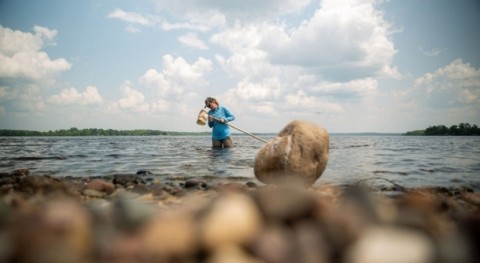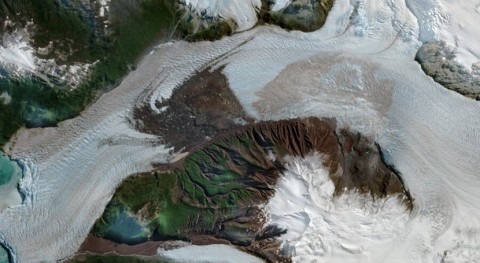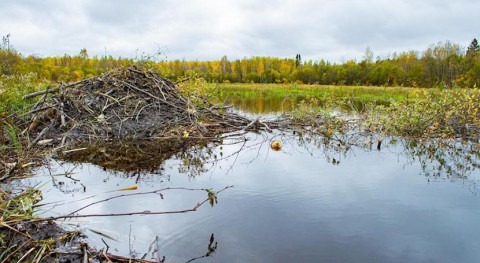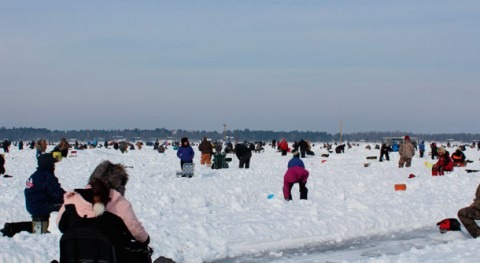Last June the American Society of Civil Engineers (ASCE) awarded John Gulliver this year’s Hunter T. Rouse Award for more than three decades of career, bringing water quality into the field of hydraulic engineering, educating engineering students, writing and editing several prominent books and generally contributing to engineering practice. Trained in chemical and civil engineering, Dr Gulliver’s research interests include environmental fluid mechanics, chemical transport and fate in environmental systems, and flow and mass transport at hydraulic structures. We had the chance of speaking with him on what it meant to receive the Hunter T. Rouse Award and discussed the present and future of green infrastructure and stormwater management.
Question: What does it mean for you to receive the American Society of Civil Engineers Hunter T. Rouse Award?
Answer: Hunter Rouse was a giant of the hydromechanics field, where most of us have read his books and landmark papers. This award is also one of the oldest career awards in ASCE. It is very much of an honour to receive the Hunter T. Rouse Award.
Q: It has been said that you brought water quality into the field of hydraulic engineering. Do you think there is a need for further integration of engineering, environmental and socioeconomic aspects to increase our resilience to future challenges such as those brought on by climate change?
A: The integration of water quality into hydraulic engineering began in the mid-1960s with people like Heinz Stefan, Donald Harleman, Gerald Orlob and Jorg Imberger. I know that I have missed a few. My contemporaries, like Jacob Jirka and Forrest Holly, continued this trend. Water quality is now fully integrated into the field of hydraulic engineering, with names like environmental hydraulics or ecohydraulics.
Water quality is now fully integrated into the field of hydraulic engineering, with names like environmental hydraulics or ecohydraulics
Q: Green infrastructure could potentially generate water quality, socioeconomic and ecosystem benefits. To what extent is it currently used for managing urban hydrology and stormwater in the United States and worldwide?
A: Green infrastructure is being utilized across the world for new projects, including large applications in New York and Philadelphia. People have looked carefully at the alternatives and found that the cost advantages are great.
Q: How do green and grey infrastructure compare in terms of maintenance and monitoring needs to ensure performance? What about in terms of cost-effectiveness?
A: Anytime that you must place something underground, such as grey stormwater infrastructure, it is quite expensive and disruptive. That is why many cities that have problems with combined sewer overflows are utilizing a solution with an extensive application of green infrastructure. If you don’t put stormwater into combined sewers, you will not have a combined sewer overflow. The capital costs of green infrastructure are a fraction of underground grey infrastructure.
Green infrastructure is being utilized across the world for new projects, including large applications in New York and Philadelphia
Of course, then there are the maintenance costs of green infrastructure. The challenge of green infrastructure is that it is placed in a diffuse manner throughout the watershed. There is not one plant with instrumentation and constant supervision, but multiple installations without anyone present that are visited only once or twice per year. It is a maintenance logistics challenge that engineers and scientists may not be prepared for. A well-organized maintenance operation will save a lot of headaches, but it cannot be an afterthought.
We have developed a rule-of-thumb for green infrastructure: over the lifetime of a practice, operation and maintenance costs will be equal to construction costs after ten years for small practices (~$10,000 construction cost) and after 20 years for a larger practice (~$100,000 construction cost).

Q: What are the barriers to broader implementation of green infrastructure?
A: There are two main barriers that I am aware of: 1) Most green infrastructure involves infiltration into the soil. We need to get a better understanding of how to deal with the spatial heterogeneity of soil structure and how to simply characterize potential infiltration rates. Too many infiltration practices do not function as such on their first day of operation. 2) The logistics of an operation and maintenance program and the cost of dealing with a poorly organized operation and maintenance program, as mentioned above.
Anytime that you must place something underground, such as grey stormwater infrastructure, it is quite expensive and disruptive
Q: Your research team has identified unintended consequences of green stormwater infrastructure, such as the potential for phosphorous release from stormwater treatment wetlands and rain gardens. Could you comment on those?
A: Sometimes green infrastructure is seen as a cure-all for any runoff pollution problem. However, there are many environmental pollution concerns and one green infrastructure practice cannot solve all of them. While wetlands and rain gardens have a great capacity to absorb toxic metals, they are not that good at dissolved nutrient reduction. Thus, if your goal is to reduce dissolved nutrient loading, you may want to try a different green infrastructure practice.
Q: Throughout your career, you have witnessed the emergence and development of a wide range of green infrastructure practices. Should we expect the development of additional innovative practices?
A: Most certainly. Green infrastructure is still a fairly new field, covering a wide range of processes and new practices in pollutant reduction, measurement of performance, and maintenance logistics will be coming out continuously.
Wetlands and rain gardens have a great capacity to adsorb toxic metals, while they are not that good at dissolved nutrient reduction
Q: What do you think are the future research needs in stormwater management?
A: We are still trying to effectively solve the retention of dissolved nutrients, which are the primary reason that our estuaries, lakes and rivers are still polluted. Second, the problem of chloride pollution from road salt in northern climates will require an innovative solution. Finally, more effective operation of a stormwater system utilizing weather forecasts is in our future.














